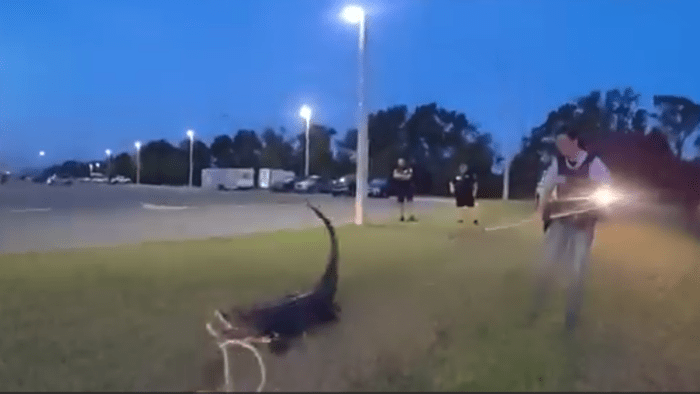TRAFFIC ALERT: If you’re planning to drive through Polk County or commute between Orlando and Tampa this week, you’ll want to pay close attention to upcoming traffic changes. Duke Energy has announced helicopter operations to install new equipment along its transmission line, directly impacting major roadways—including portions of I-4. Here’s what Orlando-area drivers need to know to avoid delays and stay safe on the road.
Why Is Duke Energy Using Helicopters?
Duke Energy is in the midst of a significant infrastructure upgrade, installing new transmission lines to improve reliability and meet growing power demands in Central Florida. Unlike traditional ground-based work, helicopters allow crews to access hard-to-reach areas, minimize ground disturbance, and speed up installation. However, this method also means temporary air and ground closures—especially over busy highways like I-4, which connects Orlando to the broader Polk County region.
These upgrades are part of Duke Energy’s ongoing plan to modernize the electric grid throughout Central Florida, including the Orlando metro area. Efficient, reliable electricity is key for the area’s rapid growth, but it comes with temporary inconveniences for drivers and commuters.
Where and When Will Traffic Be Affected?
According to Duke Energy and local officials, helicopter work is scheduled to continue throughout the next several weeks, weather permitting. The most significant impacts will be felt on:
- Interstate 4 (I-4): Expect intermittent rolling roadblocks and lane closures between Davenport and Lakeland, especially near mile markers 48 to 59. These are key corridors for Orlando commuters and travelers headed to and from Tampa.
- US Highway 27: Periodic closures or slowdowns are likely where the transmission line crosses the highway.
- State Road 33 and Other Local Roads: Some smaller roads intersecting the transmission project may also see brief closures.
Most closures are temporary, often lasting 15-30 minutes at a time as helicopters move equipment overhead. However, traffic backups can linger longer, especially during peak travel times. Work is typically scheduled between 9 a.m. and 4 p.m. to avoid the worst of rush hour, but drivers should expect the unexpected.
How Will This Affect Orlando Commuters?
For Orlando-area residents, I-4 is the main artery not only for daily commutes but for weekend getaways and access to major attractions. Even if you don’t live in Polk County, you could feel the ripple effects of this project:
- Delays for Eastbound and Westbound Travelers: Whether you’re heading to Tampa or returning to Orlando, rolling slowdowns can add unpredictable time to your trip.
- Increased Congestion on Alternate Routes: Some drivers may try to avoid I-4 by using US 27 or local roads, leading to congestion elsewhere.
- Impact on Theme Park Traffic: With Central Florida’s busy tourism corridor, visitors heading to or from Disney World, LEGOLAND, or other attractions could find themselves stuck in traffic.
- Potential Delays for Emergency Services and Deliveries: Businesses and first responders may need to adjust their routes to avoid helicopter zones.
Local officials urge all drivers to check traffic updates before heading out, allow extra travel time, and be patient as crews complete this important work.
Safety Tips for Drivers in Work Zones
With helicopters flying overhead and heavy equipment in use, safety is paramount for both workers and travelers. Here’s how you can help:
- Obey All Posted Signs: Watch for temporary speed limits, lane closures, and flaggers directing traffic near work sites.
- Stay Alert: Distractions can be dangerous, especially when helicopters are operating or crews are working near the road.
- Do Not Stop or Exit Your Vehicle: Never pull over to take photos or video of helicopters or the construction. This can create hazards for you and others.
- Use Alternate Routes When Possible: If your navigation app suggests a detour, consider taking it to avoid the worst delays.
- Plan Ahead: Check real-time traffic information from the Florida 511 website or your preferred navigation app before departing.
Remember, these short-term disruptions will lead to long-term benefits for the entire Central Florida region, including Orlando and its surrounding communities.
What Comes Next? Project Timeline and Future Impacts
Duke Energy expects helicopter work to continue into the coming weeks, with exact timing dependent on weather and equipment needs. Once this phase is complete, crews may return for additional maintenance or final inspections, but the most disruptive road closures should taper off.
The new transmission line will eventually bring greater power reliability and capacity to Polk County and neighboring areas—including parts of the Orlando metro. This is especially important as Central Florida continues to grow, attracting new residents, businesses, and tourists each year.
For now, patience and planning are the best ways for Orlando-area drivers to navigate these temporary challenges. Stay tuned to
















